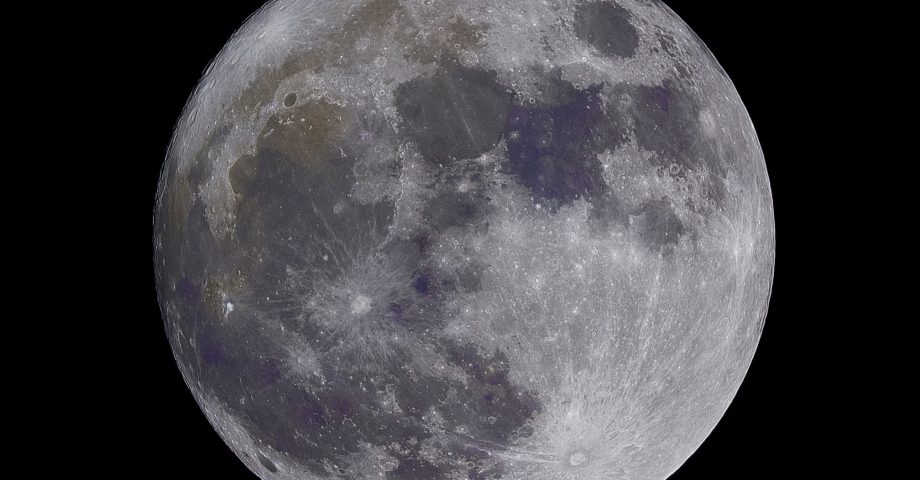Magical, romantic, fascinating, and divine! Ancient legends tell the stories of the Moon’s magic spells, transforming humans into beasts, influencing people’s behavior between sanity and lunacy. Writers are attracted to the Moon’s romantic charms as well as its darker side.
The Moon has been a source of fascination and curiosity throughout history and has inspired many cultural and symbolic traditions! Regarded as divine in past civilizations, its power was dramatically manifested in its rhythmic control over the tides and the cycle of female fertility.
Let’s take on Jules Verne’s classic journey “From the Earth to the Moon and ‘Round the Moon” with these fun facts about the Moon…
Quick facts about the Moon:
Natural satellite: It’s Earth’s one and only natural satellite
Diametre: 2,159 miles (3,476km)/ one-quarter the size of Earth
Rotation and revolution around Earth: Both take around 27 days, 7 hours, and 43 minutes
Distance from Earth: 384,40km (238,900 miles)
Distance from the Sun: around 150 million km (93 million miles)
The Moon’s crust: 60 kilometres (37 miles) thick at the centre of the near side.
Theory of creation
1. The young Earth
The young Earth had no Moon, according to the “giant impact” theory.
2. A rogue planet
A rogue planet larger than Mars slammed into Earth. Most of the rogue body, as well as a sizeable chunk of Earth, were evaporated. The cloud rose to above 13,700 miles (22,000 kilometres) altitude, where it condensed into countless solid particles that orbited the Earth as they accumulated into ever-larger moonlets, which eventually united to form the Moon.
3. The age of lunar rocks
We know that the Moon is about 4.6 billion years old, or about the same age as Earth by measuring the ages of lunar rocks.
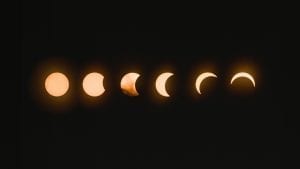
The Moon’s gravity
4. The force of gravity
The surface gravity of the Moon is only one-sixth that of the Earth because the force of gravity at the surface of an object is the result of the object’s mass and size.
5. What’s your weight on the Moon?
The force gravity applied on an object determines the object’s weight. Your mass would be the same on Earth and the Moon, but if you weigh 132 pounds (60 kilograms) on Earth, you would weigh about 22 pounds (10 kilograms) on the Moon!
6. In percentage
You would weigh an incredible 83% less on the surface of the Moon than you do on Earth due to the force of gravity!
7. The Moon’s gravitational pull
It’s the main reason for the rise and fall of ocean tides! The joint forces of gravity, the Earth’s rotation, and other factors usually cause two high tides and two low tides each day.
General facts about the Moon
8. Does the Moon rotate?
The rotation of the Moon is synchronized in a way that causes it to show the same face to Earth at all times. There’s always one hemisphere facing us, while the other always faces away.
9. The dark side of the Moon
The lunar far side, also known as the dark side has only been photographed from a spacecraft.
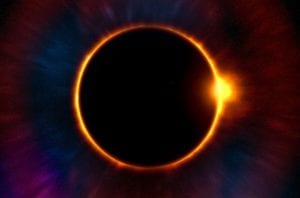
10. The shape of the Moon
It’s shape appears to change in a repeating cycle when viewed from the Earth. This is due to the amount of illuminated Moon, as this continually changes depending on the Moon’s position to the Earth and the Sun.
11. When do we see a full Moon?
We see a full Moon when the Sun is right behind us, lightening a full hemisphere of the Moon when it’s directly in front of us. When the Moon is darkened, the new Moon, occurs when the Moon is almost directly between the Earth and the Sun, the Sun enlightens only the far side of the moon, the one we can’t see from Earth.
12. The Moon orbits the Earth
The Moon orbits the Earth at an average speed of 2,300 miles an hour (3,700 kilometres an hour).
13. Unsurprisingly, the Moon isn’t made of cheese…
It has a dense rocky crust, with lunar soil called regolith and large sediments of basalt. The facade is made of both solid and semi-solid rock. From the inside the Moon has a solid iron core!

Fun facts about the Moon
14. Walking on the Moon
Twenty-four astronauts have travelled from to the Moon. In total, twelve astronauts walked on its surface. The last astronaut visited the lunar surface nearly 50 years ago, in 1972.
15. The first Moon walk
On the 20th July, 1969, Neil Armstrong was first to walk on the surface of the Moon, followed quickly by Buzz Aldrin, during the Apollo 11 mission.
16. The last Moon walk
Gene Cernan was the last man to walk on the Moon! He was the commander of NASA’s Apollo 17 mission, from the 7th to the 19th of December, 1972.
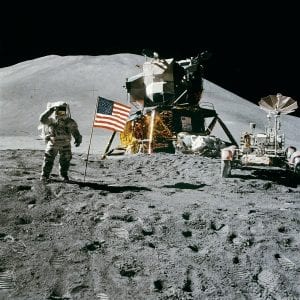
17. The Moon’s temperature
The Moon’s temperature varies massively! The sunny side can reach a sizzling 273 degrees F (134 Celsius), while the dark side can get down to a very chilly -243 degrees F (minus 153 Celsius)!
18. The first spacecraft to reach the Moon
Luna 2, a Soviet Union spacecraft was first, reaching the Moon on the 12th of September 1959. This started the US – Russian space-race to land a man on the Moon, and bring him safely back to Earth.
19. Locked in orbit
One of the coolest facts about the Moon is that it always shows us the same face. A long time ago, the Earth’s gravitational effects slowed the moon’s rotation around its axis. The effect stabilized once the moon’s rotation slowed enough to match its orbital period.
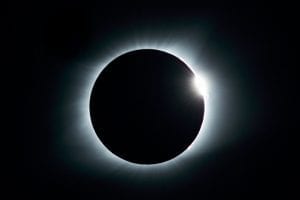
Lunar eclipse
20. What is a lunar eclipse?
A lunar eclipse happens when the Moon passes through the shadow of the Earth, blocking out the Sun.
21. Is there more than one lunar eclipse?
In fact, there are two kinds of lunar eclipses. The first one is called total lunar eclipse and occurs when the Moon and Sun are on opposite sides of Earth. The other one is called a partial lunar eclipse occurring when only part of Earth’s shadow covers the Moon.
FAQs about The Moon
What’s the Moon’s real name?
The Moon used to be called Selene - but it’s also known as Mwezi and Luna to others!
Why is it called the Moon?
The word derives from Mona, which refers to ‘month’. That’s mainly because we used to use Moons to measure month cycles!
What is the Moon made of?
Sorry, Wallace and Gromit - the Moon isn’t made of cheese, it’s completely made of metal and rock.
Do you know any fun facts about the Moon? Share them in the comments below!
Are you interested in finding out more? Check out these interesting facts about the solar system
